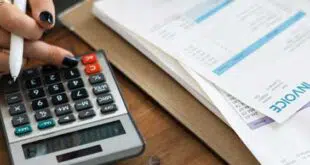New data from automated clearing house governing body NACHA reaffirm the continuing gains of electronic bill payment and the long-term decline in consumer check writing to pay bills.
NACHA’s report for 2011’s fourth quarter says that transactions under the so-called WEB standard entry class code for Internet bill-payment debits grew 6.9% to 685.9 million from 641.5 million in 2010’s last quarter. WEB transactions typically are consumer payments from biller-direct Web sites or third-party processors. The data from Herndon, Va.-based NACHA exclude on-us traffic.
Another bill-pay code, CIE, for customer-initiated entry, grew even more, though from a much smaller base: 40.6 million transactions, up 11.2% from 36.5 million a year earlier. A CIE is a credit transaction for a bill payment initiated through an online-banking site. The code picks up two new ACH products, the Secure Vault Payments system for one-time, online retail or bill payments and the EBIDS bill-payment service, which had its commercial launch in February 2011.
NACHA chief executive Janet O. Estep tells Digital Transactions magazine for an April story about the ACH that the directory of billers that can accept EBIDS payments has grown from 30 to 150 in the past 12 months, and that the service generated 19 million new ACH transactions in 2011. “There has been great take-up,” she says.
Meanwhile, about 40 banks now offer SVP, including Regions Financial Corp., which was added in January, as well as U.S. Bancorp, PNC Financial Services Group Inc., Union Bank of California, and more than 30 others. Craig Olsen, executive vice president and general manager of U.S. payments for Denver-based eWise USA, which operates the SVP switch, says eWise is working on a technological platform that will relieve banks of having to handle most of the development and operational functions of SVP themselves, and provide a uniform consumer experience. The platform will be rolled out starting in the fall, he says. “Most banks would prefer to engage in a service which takes minimal [development] from them,” he says. “This is a pretty common theme.”
A NACHA official said late last year that online bill payments through the WEB and CIE codes are on track to hit 3 billion annual transactions. But the ARC (accounts-receivable conversion) electronic-check code for bill-payment checks mailed to lockboxes continued to fade in the fourth quarter, slipping 9.7% to 484.8 million transactions versus 536.8 million in 2010’s fourth quarter. NACHA introduced ARC in 2002 and the code boomed for years as banks and billers embraced its truncation of paper checks through the clearing process. But now, as many observers predicted, the overall decline in check writing has caught up with ARC.
Two e-check applications to convert checks written at the point of sale took divergent paths in the fourth quarter. Back-office conversion (BOC) saw volume increase 7.6% to 55.1 million transactions from 51.2 million in 2010’s fourth quarter. Introduced in 2007, BOC may still be picking up new corporate users. The POP (point-of-purchase) code declined 7.6% to 126.9 million transactions from 137.4 million a year earlier.
TEL, the e-check code for telephone-based ACH payments, garnered 92.9 million transactions in the fourth quarter, up 0.7% from 92.3 million in 2010’s last quarter.
NACHA’s biggest fourth-quarter gainer was the new IAT code for international ACH transactions, which saw volumes increase 558% to 10.4 million transactions from 1.58 million a year earlier. An IAT transaction can be either a credit or debit. The code superseded two earlier ones. “My suspicion is that part of the reason it is growing is that people are starting to understand what they should code as IAT,” says researcher Nancy Atkinson, a senior analyst at Boston-based Aite Group LLC.
In related news, NACHA last week issued a request for comment on its plans to streamline health-care payments with ACH transactions. NACHA set an April 27 deadline for comments. Details about the RFC can be accessed through this link.



